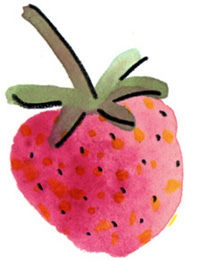We will use one of our beds for winter greens grown under plastic row cover (here’s the post on making the hoops to support the cover). In the spirit of the scientific method, we’re trying to start these plants two ways: direct sowing in the bed, and starting seeds in trays that then later are transplanted.
Today’s inspiration and sources:
I started with a plastic tray for the seeds.
It comes with a tray beneath to provide stability and catch water.
Next, I piled the planting compost into it, letting it heap up.
We don’t want the compost to compact, so we just dump it in without stuffing.
Then, and this technique I learned from Michael on Grow Gook Eat, we use a stick to even off the top of the compost in a sawing motion. This allows for a flat top without compacting..
Next, time to add some seeds. Planting a lettuce mix that did really well over the summer in a shaded bed, along with spinach (which bolted immediately when we planted it in June), and two types of kale that have done very well for us already.
Made holes with my finger before dropping in seeds for the spinach and kales.
After filling the little holes with seeds, and sprinkling the lettuce seeds over the top of their section, I added more compost over the top, sawed again (careful not to scrape off the shallowly sown lettuce seeds), added tags, and gave it a good water.
For the other half of the experiment, I took the empty bed, added a nice layer of compost on top, and planted like so.
The left half of the bed, not really pictured, is where I’ll transplant the ones started in the seed tray.
And that’s it! We’ll check back in a few weeks to see how they are doing. I think the biggest variable is that this bed is kind of shady with our cherry tree (which we hope to slowly reduce to a manageable size over the next few years), and I can put the seed trays in the sunny part of the yard. On the other hand, the lettuce seed packet says they don’t recommend transplanting, so we’ll see what matters more—sun or following the directions on the packet.
After this work in the garden yesterday, we attended the お月見 (O-Tsukimi) or moon viewing event at the Portland Japanese Garden. We, along with a masked and socially-distant group of other attendees, watched as the moon rose through the haze from the California wildfires. It was blood red at first, and then faded to jack-o-lantern orange. The moon itself defied photography, but I did capture the special raking of the gravel in the garden for this festival. The checkerboard pattern is meant to remind one of rice paddies, and is a nod to the fall harvest origins of the moon viewing festival in Japan.
We were told that it takes them two days to rake this pattern, and it’s only done once a year.









